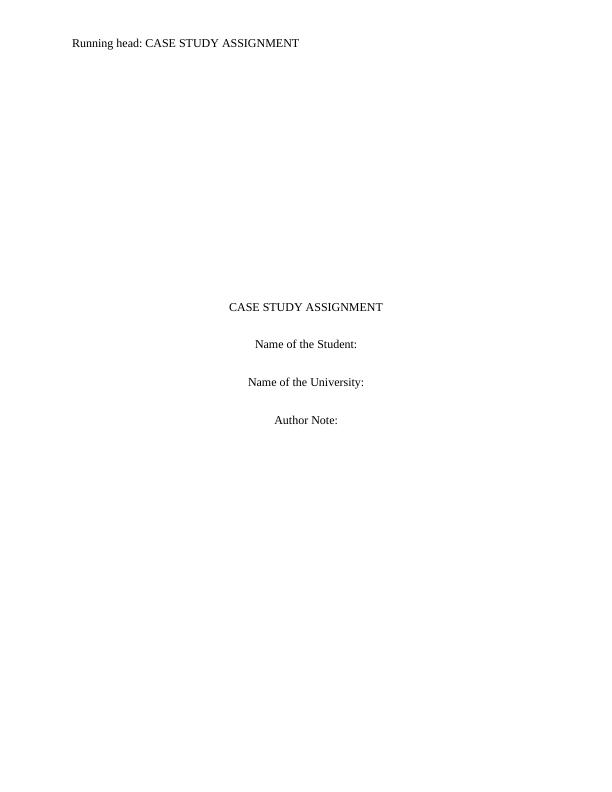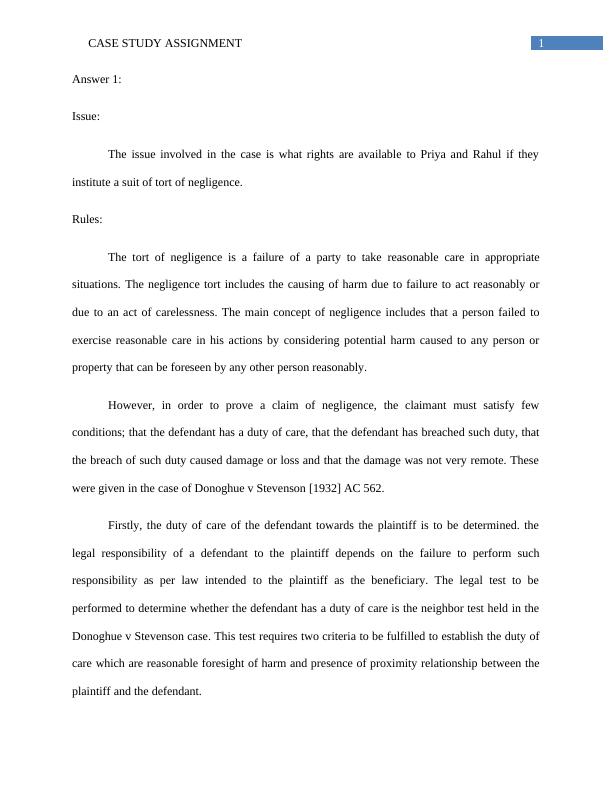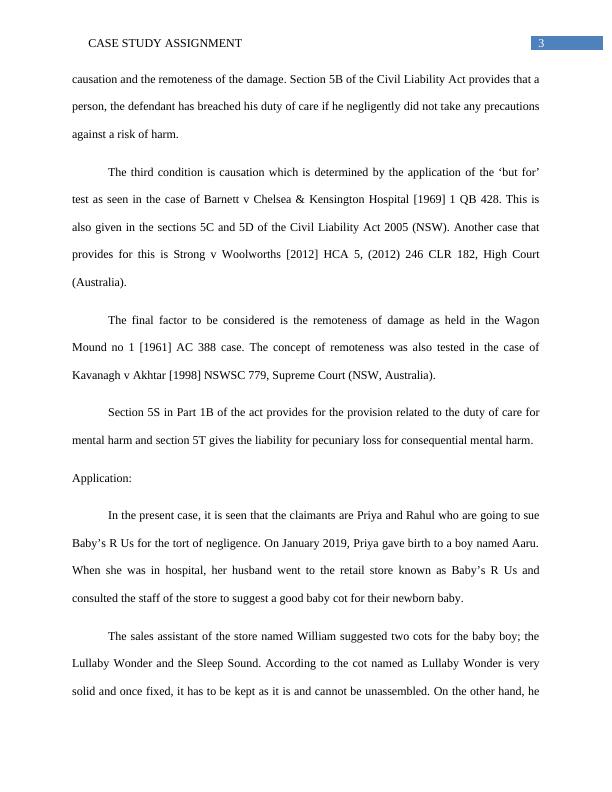Case Study Assignment on Tort of Negligence and Australian Consumer Law
A research assignment in Commercial Law, worth 35% of the assessment, requiring independent research, reflection, and analysis of relevant laws and legal issues.
11 Pages3022 Words114 Views
Added on 2022-11-14
About This Document
This case study assignment discusses the tort of negligence and Australian Consumer Law. It covers the rules, application, and conclusion of the case. The parents can sue the store for the tort of negligence as per tort law and the provisions of the Civil Liability Act 2002. The parents can claim compensation as per section 138 and 139 of ACL against the store Baby’s R Us as they were unable to provide information about the actual manufacturer. The document type is a case study assignment and the type of assignment is a legal analysis. The subject is law, the course code is not mentioned, and the course name and college/university are not mentioned.
Case Study Assignment on Tort of Negligence and Australian Consumer Law
A research assignment in Commercial Law, worth 35% of the assessment, requiring independent research, reflection, and analysis of relevant laws and legal issues.
Added on 2022-11-14
ShareRelated Documents
End of preview
Want to access all the pages? Upload your documents or become a member.
Tort of Negligence and Australian Consumer Law: A Case Study
|10
|2806
|198
Business Law Discussion 2022
|7
|1293
|24
Case Study Analysis
|7
|1723
|270
Tort Law: Establishing Negligence and Defense of Volenti Non Fit Injuria
|9
|2482
|62
Tort Law: Duty of Care and Negligence
|9
|1989
|98
Commercial Law: Rights to Sue in Tort of Negligence and Australian Consumer Law
|11
|2902
|193




